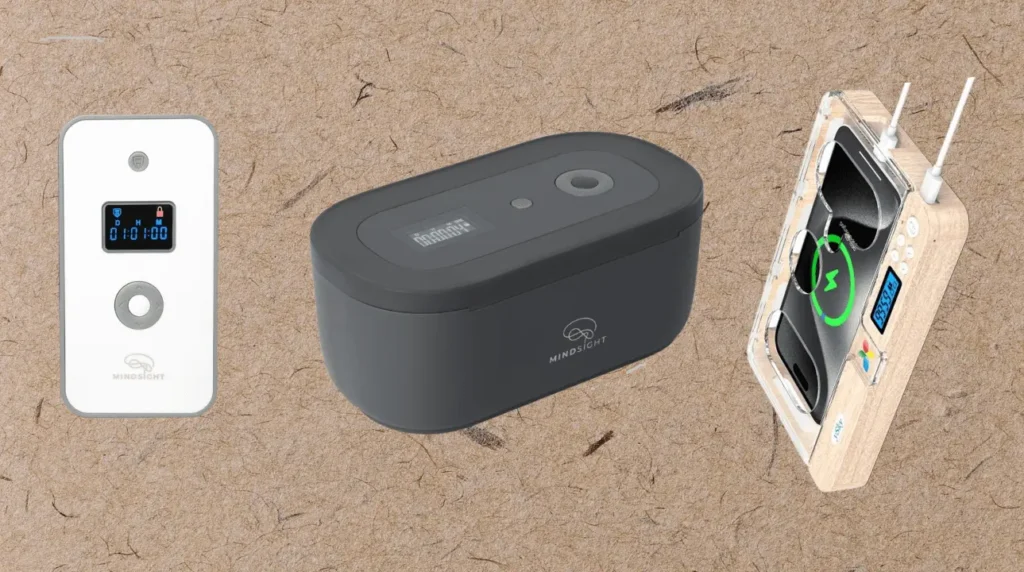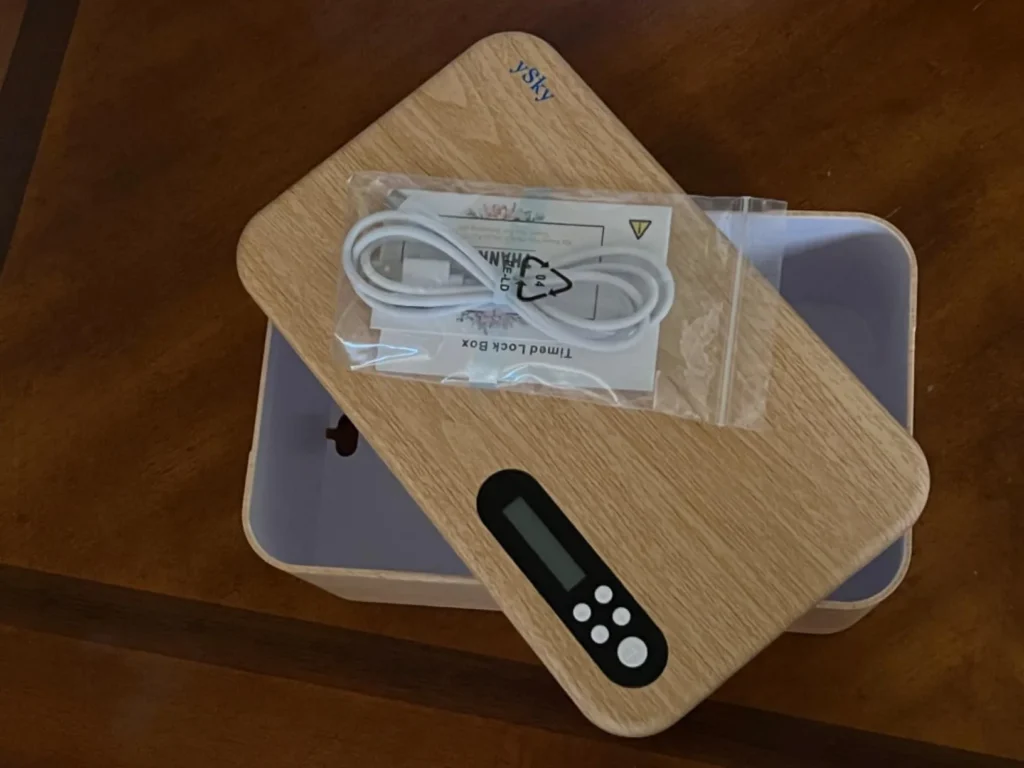
Let’s be honest: we’ve all felt that sinking feeling when you realize you’ve just spent two hours mindlessly scrolling instead of getting actual work done. Screen time apps promise to help, but they’re laughably easy to bypass with a few taps. A phone lock box is different. It’s a simple piece of tech that creates a real, physical barrier between you and your biggest distraction.
But how exactly does this seemingly basic container manage to do what sophisticated apps can’t? The answer lies in beautifully simple engineering combined with some solid psychology. In our guide to the 9 best phone lock box timers, we review the top models, but here we’ll dive into the nuts and bolts of how these devices actually work.
The Basic Mechanism: Simpler Than You Think
At its core, a phone lock box operates on a straightforward principle: timer + lock + physical barrier = forced focus time. Here’s the step-by-step process:
Step 1: Load It Up
You place your phone (and maybe that bag of chips you’re trying to avoid) inside the container and close the lid. Most boxes are spacious enough to hold multiple devices, so you can lock away tablets, game controllers, or even a partner’s phone for a true digital detox.
Step 2: Set Your Freedom Timer
Using the controls on top, you set how long you want to stay disconnected. Most models let you choose anywhere from a few minutes to several days. The timer interface is usually dead simple, just buttons or a dial to adjust hours and minutes.
Step 3: The Point of No Return
Here’s where it gets real. You press the lock button, and most devices give you a brief “hesitation period” (usually 5-10 seconds) to change your mind. This is your last chance to abort the mission before the box seals itself shut.
Step 4: Wait It Out
Once locked, the container becomes your digital fortress. The timer counts down, and there’s no way to access your phone until it hits zero. No emergency overrides, no “just this once” exceptions—just you, your thoughts, and whatever you’re supposed to be doing.
What’s Actually Happening Inside the Box
The magic happens through a surprisingly simple combination of components:
The Timer Brain
At the heart of every phone lock box is a basic digital timer. think of it as a kitchen timer with attitude. This microcontroller keeps track of the time and tells the lock when to engage and release. It runs on standard AA batteries and can operate for months without needing a change.
The Locking Mechanism
This is where the action is. Most lock boxes use one of two main systems:
- Solenoid Locks: These use an electromagnet to push or pull a metal bolt into place. When you press lock, an electrical pulse engages the bolt. When the timer hits zero, another pulse retracts it, opening the lid.
- Motorized Latches: Some boxes use a tiny motor to physically move a locking pin. These are often more battery-efficient because they only use power during the moments of locking and unlocking.
Power Management
Phone lock boxes are incredibly energy-efficient. They typically run on 2-4 AA batteries that can last for over 6 months of regular use. The key is that once locked, the mechanism doesn’t need constant power—it only draws a small amount of energy to lock and unlock.
The Different Flavors of Digital Jail
Not all phone lock boxes work the same way. Here are the main types you’ll find:

- Basic Timer Locks (The Purist): Set the timer, press lock, and wait it out. No overrides, no emergency access. These are perfect for people who know they need a strict, no-excuses approach.
- Override-Enabled Systems (The Flexible Option): Some boxes offer a middle ground with a limited number of emergency unlocks. This gives you a way out if something truly urgent comes up, but the limit prevents it from becoming an easy loophole.
- Fortress Mode (The Maximum Security): For the truly committed, some models offer a “fortress mode” with zero escape routes. Once you’re locked in, you’re locked in. It’s digital discipline in its purest form.
- Signal-Blocking Systems (The Black Hole): The premium tier of lock boxes uses Faraday cage technology to block all incoming signals, Cellular, Wi-Fi, Bluetooth, and GPS. They don’t just lock your phone away; they create a complete “digital dead zone” so no notifications can get through.
When Things Go Wrong: Failsafes and Solutions
Let’s address the elephant in the room: what happens when your detox plan hits a snag?
- What if the batteries die? Most quality lock boxes handle this gracefully. When you replace the batteries, the timer resumes exactly where it left off. Some even include an external USB-C port for emergency power.
- Can you break into it? Honestly, yes, but that misses the point entirely. Most plastic boxes could be destroyed with enough force. But if you’re willing to take a hammer to your $50 lock box to check Instagram, the issue might be bigger than the box. Metal options are far more tamper-resistant.
- What if it’s overstuffed? If you pack too much inside, the locking mechanism might not engage properly. Respect the size limits, a box that won’t lock defeats the whole purpose.
The Psychology: Why Physical Beats Digital
The technology is simple, but the psychology is sophisticated.
- Physical vs. Digital Barriers: A screen time app lives on the device it’s trying to control. That’s like asking a cookie to guard itself. A lock box creates a real separation that your brain processes differently. You can’t hack or rationalize your way through a locked container.
- Out of Sight, Out of Mind: Opaque boxes leverage a basic principle: if you can’t see the temptation, you’re less likely to crave it. An opaque box eliminates the visual trigger of a glowing notification light.
- The Power of a Commitment Device: Psychologists call these “commitment devices”, tools that help you stick to a decision. By making it physically impossible to access your phone, you remove the constant decision fatigue of choosing not to check it.

The Bottom Line: Simple Tech, Powerful Results
At the end of the day, a phone lock box is just batteries, a timer, and a lock working together. The “smart” part isn’t in the technology, it’s in its understanding of human nature.
The real genius is recognizing that sometimes the best solution is a low-tech one. When you’re battling devices designed to be as addictive as possible, you need to fight fire with physics. The technology works because it makes accessing your phone harder than not accessing it.
And in our hyperconnected world, that might be the smartest tech of all.
Have you ever used a phone lock box? Share your experience in the comments below!

